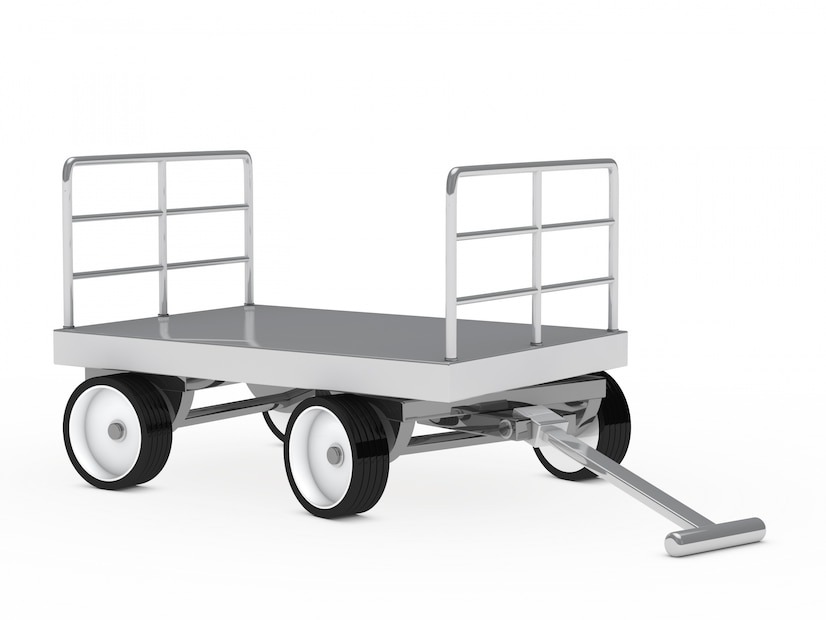Selecting the correct trailer coupling for a single axle plant trailer is essential for safe and efficient transportation. With various coupling types available, choosing the best option depends on load requirements, towing conditions, and compatibility with the towing vehicle. A well-matched coupling ensures stability, enhances control, and minimises the risk of disconnection while in transit.
Understanding Trailer Couplings
A trailer coupling is the connection point between the towing vehicle and the single axle plant trailer. It plays a crucial role in ensuring smooth manoeuvrability and secure attachment. Different couplings are available, each designed to accommodate specific towing capacities and operational conditions.
Types of Trailer Couplings
Different trailer coupling types offer varying levels of security, flexibility, and durability. Understanding their features helps in selecting the best option for a single axle plant trailer.
Fixed Couplings
Fixed couplings are permanently attached to the towing vehicle. These are ideal for light-duty applications where frequent detachment is unnecessary. They offer a secure connection but lack flexibility for varied towing needs.
Ball Couplings
Ball couplings are among the most common choices for plant trailers. They involve a tow ball on the vehicle and a socket on the trailer. This type provides flexibility, making it suitable for different terrains. However, ensuring a snug fit is essential to prevent movement between the trailer and towing vehicle.
Ring and Pintle Couplings
Designed for heavier loads, these couplings consist of a ring on the trailer and a pintle hook on the vehicle. They are commonly used in construction and industrial applications where durability is a priority. The mechanism allows for controlled movement, reducing the risk of trailer sway.
Pin Couplings
Pin couplings use a pin mechanism to connect the trailer and towing vehicle. They are durable and reliable, particularly for off-road conditions. However, they may not offer as smooth a towing experience as ball couplings.
Key Factors to Consider When Choosing a Trailer Coupling
Choosing the right trailer coupling involves evaluating several factors to ensure safety, compatibility, and durability. Keep these key aspects in mind before making a decision.
Load Capacity
The weight of the single axle plant trailer and its cargo determines the appropriate coupling type. Exceeding the weight limit can lead to instability and increased wear on both the trailer and the towing vehicle.
Towing Environment
The terrain influences coupling choice. For off-road or uneven surfaces, ring and pintle couplings provide better articulation, reducing stress on the connection point. In contrast, ball couplings are more suitable for smooth roads and controlled environments.
Compatibility with Towing Vehicle
Ensuring that the trailer coupling is compatible with the towing vehicle’s tow bar is critical. Some couplings require specific tow hitch designs, so verifying compatibility before purchase prevents installation issues.
Ease of Attachment and Detachment
Frequent coupling and uncoupling require a system that is quick and simple to operate. Ball couplings and pin couplings often provide easier handling compared to more complex mechanisms like ring and pintle setups.
Durability and Material Strength
High-quality materials enhance the durability of the coupling system. Look for corrosion-resistant coatings and robust construction, especially if the trailer is exposed to harsh weather conditions.
Security Features
Anti-theft mechanisms, such as locking systems, can prevent unauthorised removal of the single axle plant trailer. Some couplings come with built-in security locks, providing an additional layer of protection.
Maintenance and Safety Tips
Proper maintenance of the trailer coupling and single axle plant trailer helps ensure safe and efficient towing. Follow these key tips to keep your setup in top condition.
- Regular Inspections: Check for wear, corrosion, and any signs of damage. Worn-out components can compromise safety.
- Lubrication: Moving parts should be lubricated periodically to prevent stiffness and wear.
- Correct Hitching Procedure: Always double-check that the coupling is properly secured before setting off.
- Load Distribution: Uneven weight distribution can affect stability. Ensure that the trailer’s weight is evenly balanced.
Common Mistakes to Avoid
When selecting and using a trailer coupling, certain mistakes can compromise safety and performance. Avoid these common errors to ensure a smooth towing experience.
- Overloading: Using a coupling with a lower weight capacity than required can lead to mechanical failure.
- Incorrect Fit: A mismatch between the coupling and the tow hitch can result in instability and disconnection.
- Ignoring Manufacturer Guidelines: Always follow the manufacturer’s specifications to ensure optimal performance and safety.
Conclusion
Selecting the right trailer coupling for a single axle plant trailer requires careful consideration of weight capacity, towing conditions, and compatibility. Whether opting for a ball coupling for flexibility or a pintle system for durability, ensuring a secure and reliable connection is key to safe towing. Regular maintenance and adherence to safety protocols further enhance the efficiency and longevity of the trailer system.






